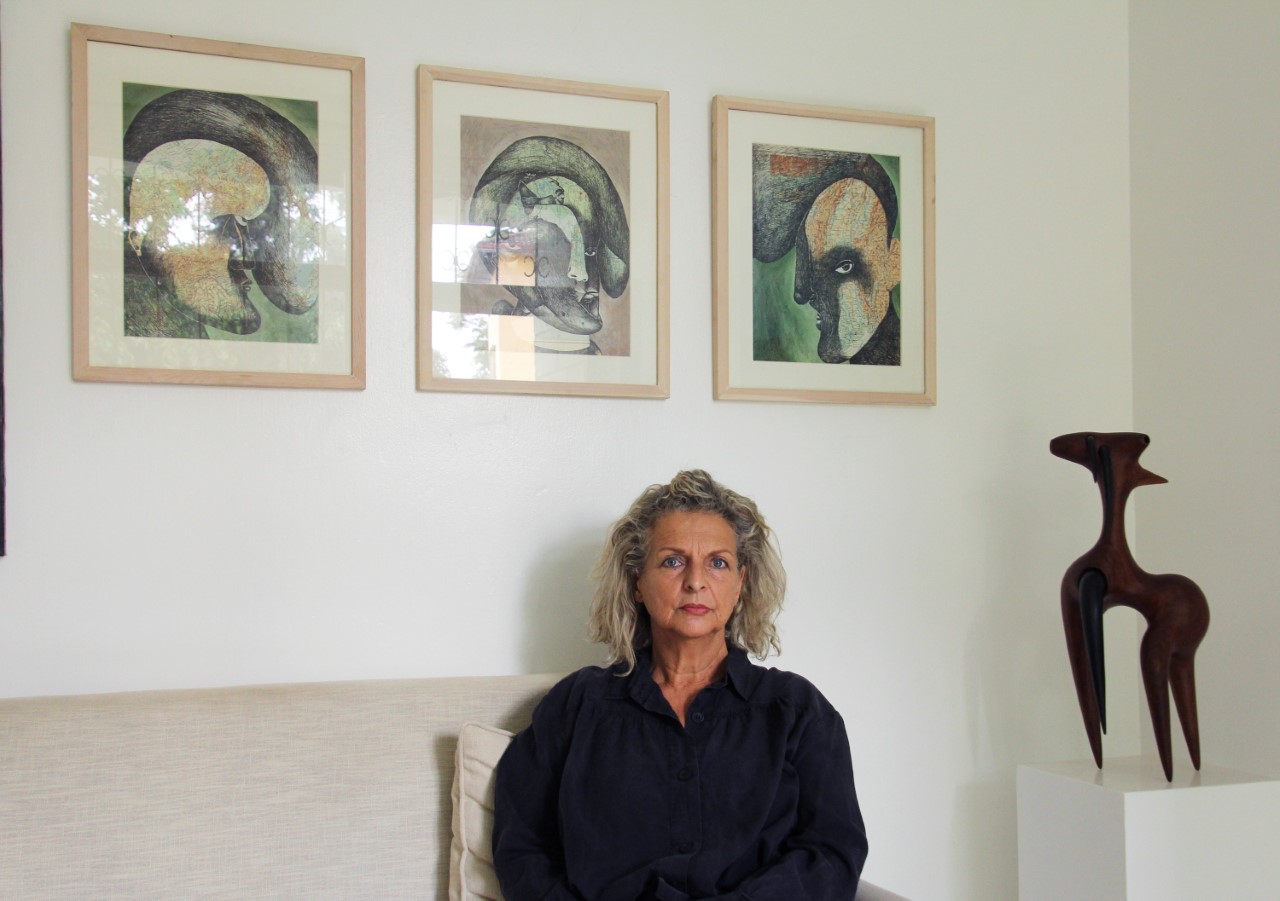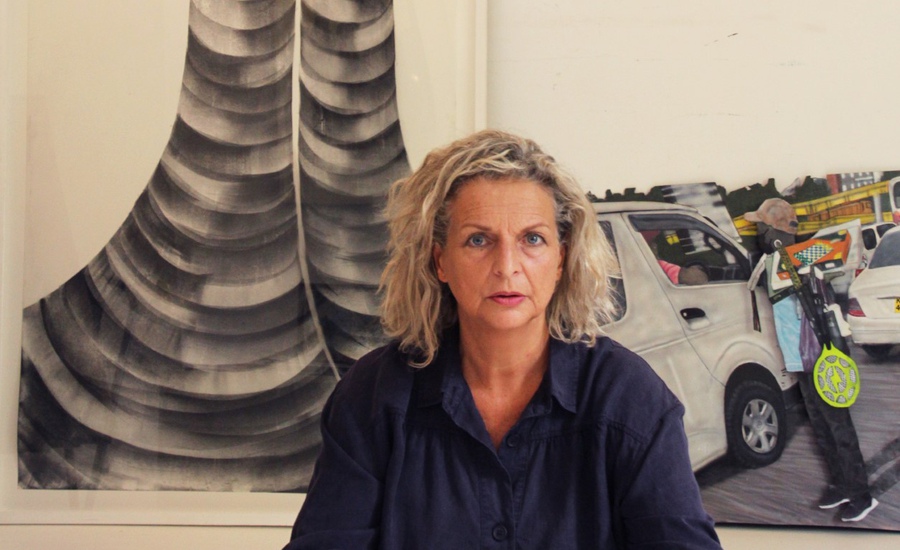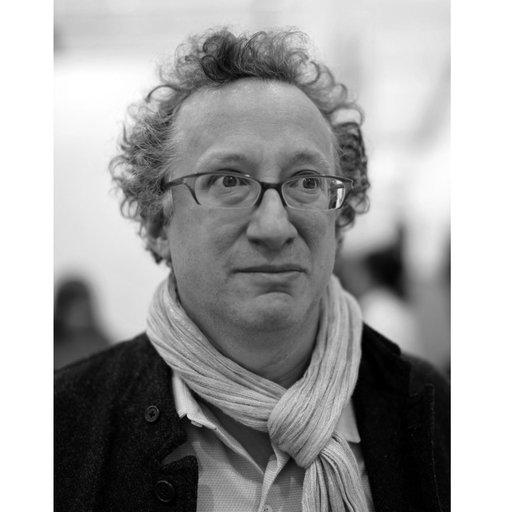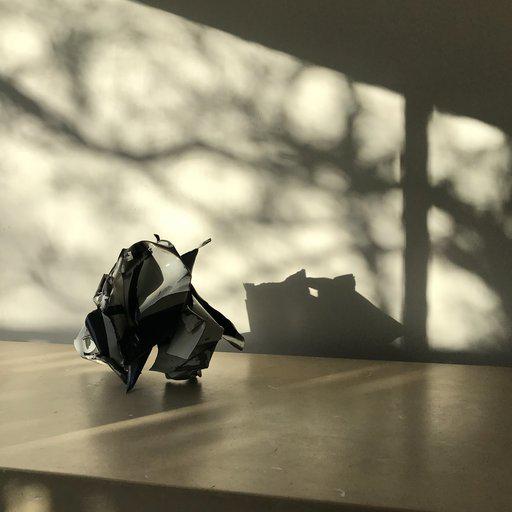Danda Jaroljmek understands that good art knows no bounds. Born in the UK, raised in the Gambia, educated in London, and now based in Kenya, Jaroljmek co-founded the Circle Art Gallery and Circle Art Agency Nairobi in 2012, with the purpose of creating a strong, sustainable audience for artists from this part of East Africa.
Over the past decade, Circle has staged a series of spectacular exhibitions, taken part in art fairs across the continent, as well as in Europe and North America, served as an advisor for Phaidon's African Artists book, and developed a devoted base of collectors, broadening the global appeal of art from this part of the world.
Of course, no one develops such a successful and prominent public profile in the art world without the benefit of a rich, interior life. In this interview, Jaroljmek describes her own personal forays into fine art, admits she was never going to be the world’s most brilliant artist, and reveals which works and artists she truly prizes in her Kenyan home. Read on to learn more about contemporary art from this overlooked part of the world, as well as Jaroljmek’s own personal development as a collector, and why she sometimes feels like a frustrated minimalist.

Danda Jaroljmek at home, in her reading room
" I live in Kenya. I’ve been here for 25 years. I was bought up in the Gambia, in West Africa, but educated in Britain. I worked in London for a long time then went to art school. I did an amazing foundation at Camberwell and then I went to Chelsea and graduated in 1996. I practiced sculpture for some time, specializing in glass. I found myself in Nairobi soon after and haven’t looked back. This is my home. I’ve lived here longer than anywhere else in the world.
"I was never going to be a brilliant artist but I think the process of working in the studio in a solitary way and understanding the process, what it’s like to be an artist, and to tell your story, made me perhaps a slightly different type of gallerist. Perhaps it's given Circle a little bit of a different approach to the way we work.
"I think a lot about process and concept. I think that also we perhaps have a less commercial outlook. We act very much as a mini-institution, as well as a commercial gallery. We’ll show work we want to be seen. It might be a bit more risky, but we do it because it’s important.
"I’ve been working really hard to change people’s attitudes about what art is for, and how you appreciate and enjoy art. It’s not decoration, it’s not a souvenir. A lot of spaces here did have to cater for that, as there is a big tourist industry in Kenya. So, it’s been a process of education for viewers of the art we’ve shown.
"Art in Nairobi is a fairly small community, so we all know each other. There isn’t a lot of infrastructure. We go to each other’s exhibitions and generally, we know what’s going on. Unfortunately, like most places, if you’re an artist you have to find your way to the capital city, which in our case is Nairobi. There’s less chance for an artist if they live in Mombasa, Kisumu or somewhere else.

Danda and her brother, photographed by her father
The art on the walls of her childhood home I lived in two homes really - England and the Gambia. My great, great grandmother was an amateur painter of landscapes, so my father had quite a lot of her art around in the Gambia.
My father used to take beautiful black and white portrait photos of the family in a makeshift studio, and he had a makeshift darkroom in the bathroom. The portraits were of us growing up, but they were particularly good – they were not your classic photos of the children. Dad had aspirations to being an artist and an architect, so they were very carefully considered and composed. The interaction between me and my brother or mother, or me and my sister was good. So I grew up with a lot of these around.
In the house in England there wasn't much art, apart from a lot of Constable-type landscapes of no particular value. Rather old fashioned.
I have a life-long love of photography. So much later on I started to take my own photographs and finally got a beautiful analog Canon camera and I set up my own darkroom. So that must have come from those childhood experiences.
We didn’t have TV. In the Gambia you were much more reliant on finding things for your own entertainment. I’m a real animal lover and a bit of a twitcher [bird watcher], so I used to spend a lot of time in the garden drawing birds. I was really obsessed with birds.
The Gambia and Kenya are both ornithological paradises. We have the most extraordinary birds, from tiny little brilliantly colored sunbirds to a pair of eagles nesting in my garden here. There’s always a different bird that you haven’t seen.

Danda's first art buy, photographer unknown
The first show that blew her mind Really difficult question! We went to lots of museums and galleries when we travelled, as my mother was very keen. I think the most memorable experience was at the Accademia in Florence seeing Michelangelo’s Prisoners or Slaves .
The slaves are half hewn out of stone and I think that was really the first time I thought about how sculpture was made; how you removed the stone to find this figure, or to make this figure, inside. I presume they were intended to be like that rather than unfinished. They stayed in my memory and later on, when I started making myself, I thought about them again.
The first piece of art she bought It wasn’t really a piece of art, it was a print that I saw in the window of a shop in Portobello Road, West London with my best friend. We were both really broke at the time, so we decided to share it. It was a print of a photograph of kids jumping off a log into a lagoon or into a river. It was probably New Orleans but it reminded me of the Gambia. She had it in her house for years but I finally managed to get it off her. And brought it out to Kenya.
A piece of art she made At Camberwell we had the most extraordinary tutor who had a great way of making us think about things. He would ask us to make a three-dimensional artwork of our journey to college that morning. Or if the end of the world came and you had to rescue one thing from your house, what would it be?
He’d say, ‘go to the V&A and look at reliquaries’. And we’d be set a project to make a reliquary out of any material for some unimportant object - but to make it important. These would be our projects for two or three weeks. It was so exciting.
The reliquary I made was a feather, stone and a chestnut or an acorn. I found some wood and carved these little shapes and made a little hole to put the object in. It took me a really long time and I did it really carefully and I really enjoyed it. And I had three strange little wooden shapes that opened up with the object inside. And someone bought it at my foundation end of year show, and I really regret selling it! I didn’t even think about it, it was 'God someone wants to buy it!' Luckily I documented it.

Reliquaries by Danda Jaroljmek
Does she describe herself as a collector? I wasn’t for a long time because I travelled a lot and I moved house a lot. I rent, I don’t own property. So I was conscious of not accumulating too many things. But then inevitably you can’t help yourself because work comes in and you fall in love with things. I made a conscious decision for budgetary reasons to collect small things, and preparatory drawings by artists. I’ve noticed when people come to my home that I’ve accumulated a lot of rather special small precious pieces and people really enjoy them.
I’ve found myself advising young collectors who don’t have a lot of money. You don’t need to spend a lot of money in the beginning. You can think about the artists you’re interested in, and you can buy small works with not a lot of money. So I have a salon hang of small works at home.
So yes, maybe I have become a collector but maybe not in the obsessive way that some collectors are. I’m surrounded by it in the gallery, so I don’t necessarily need to own it...
 Danda with artists Beatrice Wanjiku and Eric Gitonga - photo couresy Circle Art
Danda with artists Beatrice Wanjiku and Eric Gitonga - photo couresy Circle Art
Why she thinks African art has become a 'thing' Well firstly, we’re all delighted because we’ve been predicting this for the last ten years, and hoping that it was going to happen, and working really hard to ensure that east African artists are included in this interest. South and West African artists have always had much more visibility, and more galleries, and more infrastructure and so on.
Generally, the art market follows emerging artists so perhaps after the art boom in China and India people were looking around again. Africa is an enormous continent that takes up a huge part of our globe but artistically it’s been pretty much ignored. I think it’s been hugely helped by platforms that have been set up specifically to promote African art: the art fairs for African art, art museums on the continent, and online platforms that are affordable for galleries on the continent to use.
I’ve been in the arts in Kenya for over 25 years and so we’ve built up networks to support the galleries. We’ve supported each other, perhaps in a way that galleries in the west don’t. We have shared ideas on where we should go and what we should spend our money on. And which fairs are good.
There’s been more collaboration certainly. I think as far as artists are concerned, access to information has been the biggest thing of all. Everyone in Kenya has a smartphone, we have wi-fi and phone coverage across the country, even in the most remote places. So, artists can find the information they want in a way that the older generation of artists who I also work with didn’t have when they were starting out. So power, and access to their work was controlled in a way that it isn’t now.

Gor Soudan - Two Crows
The piece everyone comments on There’s two really. A woodcut of two crows talking to each other – they’re very animated. It’s by a Kenyan artist called Gor Soudan . He’s had some international interest over the last few years. He doesn’t normally do woodcuts and I loved it and picked it up.
It’s on pretty flimsy paper, and it’s not an archival print. But it’s unusual and everyone always asks me about it. They don’t expect it to be by him because he mostly draws. It’s just really simple and they can’t believe it’s him because his work is usually very detailed. It’s so simple and yet it’s so animated. You can imagine them talking to each other, pecking at each other and moving around. I don’t what it is, but it really appeals to people. They always pick on it.
And the other one is by Souad Abdelrasoul, an Egyptian artist. We don’t usually work with Egyptian artists, but she’s married to Salah Elmur who is Sudanese who we work with, so they come here a lot. She gave me a painting of a woman and a dog who looks like a wolf, after her first solo exhibition here. And it was especially done for me. And it gets a lot of admiration because she’s an amazing painter and people are just very jealous!

Souad Abdelrasoul - Untitled (Woman with Dog and Flowers)
The artwork in the bathroom There’s one little painting in my bathroom and it’s an oil painting by a senior Kenyan artist Sane Wadu. He does these very heavy oil and impasto crazy scenes of people and animals all muddled together. His work is very distinctive, and you immediately know it’s his work. I sort of snatched it from his studio and negotiated quite hard with him a few years ago! It’s very small, but I always see different things in it. It’s an intense, tiny little painting, but I always see strange little things I haven’t seen before when I’m standing in the shower, or brushing my teeth.

Sane Wadu - Wedding Sacrifice
The thing that's not art, but is to her I own a racehorse! I treated myself for my sixtieth birthday last year. A friend of mine was giving away her elderly racehorse. His name is Golden Ash and he won the Kenyan Derby. He’s a thoroughbred and he’s absolutely exquisite.
They’re designed to run and so everything about his shape and the way he holds himself is just a piece of art for me. It sounds like a crazy thing, and sounds like I’m really privileged, but he needed a home. He doesn’t run any more, he’s just a pet, and it’s not so expensive here to look after a horse.

Danda's horse, Kenyan Derby winner Golden Ash - photo courtesy Danda Jaroljmek
What someone might deduce about her from her collection Inevitably I own art from a lot of the artists I work with, so maybe loyalty; support; encouragement? Also, most of the work I own is monochromatic. I think I’m a frustrated minimalist! I’d like to live in a white, shiny sugar cube house but I don’t, I live in a cottage. The collection is all fairly simple, mostly black and white. There’s a lot of figurative art being made here so I tend to gravitate to more abstract works because it’s more unusual. But yeah, it’s a tough one. Maybe that I’m a frustrated minimalist.
And also, I only ever made black and white photographs. I did have a darkroom in my bathroom, so I played a lot with light and shadow, trying to get that beautiful black depth that’s almost purple. There’s a lot of color around us here in Kenya. It’s different from other places where you have grey skies. I also live at the beginning of a forest, so the colors are incredibly rich outside so with my inside I try to calm and quieten it all down so that it’s more contemplative.

Salah Elmur - Twin Sisters
The piece she'd love to own if money were no object It's not so much about cost but space. There’s always work that I love but I also really enjoy seeing them go to really good homes. There’s one painting in the gallery that we still have by Salah Elmur called Twin Sisters. Which is two meters across. It’s enormous – almost the entire size of one wall in my house. I see it every day and I love it.
He was inspired by his father and grandfather’s photo studio in the Sixties and Seventies. They took those wonderful post-independence photos of family groups, so his work is quite often inspired by these formal family staged portraits with a set behind, a palm tree or an armchair and so on.
He expresses emotion really cleverly in his paintings. There are twin sisters sitting on the right-hand side, and a man who has obviously come courting for one of them. And he looks really uncomfortable. He’s in a formal suit looking quite awkward. And the sisters are quite self-contained, sitting really close together.
I tell myself stories about the characters, taking in the nuance between their hands and feet, and the ways their heads are tilted. I guess you don’t get that unless you look at a piece of work for a long time. So, if I could have anything I wanted it would be that painting. But really, it needs to go in a museum.

Danda with Ugandan artist Eria ‘Sane’ Nsabuga (left) and Samit Gehlot, Kenyan collector and Circle Shareholder (right) photo courtesy Circle Art
The person who shares her taste in art Taste is an interesting thing, isn’t it? We have a team here in the gallery and I’m always surprised when new work comes in by a particular artist and the Circle team and I end up picking the same work as the best example.
I don’t know if it’s a question of taste, and we’ve ended up developing the taste together, or if it’s an aesthetic that we have in the gallery that’s rubbed off on everyone else too. But we do inevitably agree on which works to choose. Between us there is a universal ‘yes – that’s the one!’

Shabu Mwangi - Self Reflection, 2021
The artwork that reflects where her life is right now That’s a really good and tricky question. This year for me was my sixtieth year which was pretty monumental and pretty scary. Like, how did that happen so fast? And, I guess, hopefully coming out of Covid, everything that seemed sort of normal changed in the last two years and I’m really grateful that - hopefully - we’ve come out of it and - hopefully - come out of it well.
I think for all of us it’s self-reflection. Where am I? What should I be doing to try to prepare for the future? All those questions that you can’t answer when you’re running to catch up with stuff you just don’t have time to do.
There’s an artist I love called Shabu Mwangi who we’ve worked with a long time. He is a very unusual person. He’s had a tough life and is doing well now. He does a lot of work, giving a lot back to the community where he came from. His work is all about self-reflection and about where we are now, and who we are in relation to others, and how we can take care of ourselves and each another. And perhaps I understand more his work now than I did before.
I’ve been lucky and I have a relatively privileged life, but I think self-reflection is important and I think a lot of us have been going through that. So I think his work is very current right now, and really speaks to what we’ve all been going through.
Kehinde Wiley invited some artists to show in LA last year called Self-Addressed. He [Mwangi] sent over a large diptych, painted on metal, which was really extraordinary, and probably one of the best works he’s ever made. We’ll hopefully be showing it in May in London at a show at Cromwell Place. I didn’t have much chance to spend much time with it before it was packed into a crate and shipped off so I'm looking forward to seeing it again.

Sidney Mang’ong’o - Untitled
The artwork she'll leave to someone she loves This is a slightly morbid answer, but I have a work above my mantelpiece by a young Kenyan artist called Sidney Mang’ong’o who committed suicide two years ago. I loved his work; it was very abstract. But this one is the face of a boy in profile. And he painted on brown paper that you you use to pack flour and maize meal - layers of very textured brown paper. I look at that painting a lot because it’s above the fireplace and it reminds me of him. I guess that would be what I would pass on to my nieces as a reminder of how we need to take care of each other.
We knew that Sidney had some mental health issues, but we never expected what happened. It was a great shock to all of us in the gallery, and it’s a reminder that we must remember to always watch out for people and make sure that they’re OK. Because it was too late for him but his art lives on and is still being admired and collected.
























